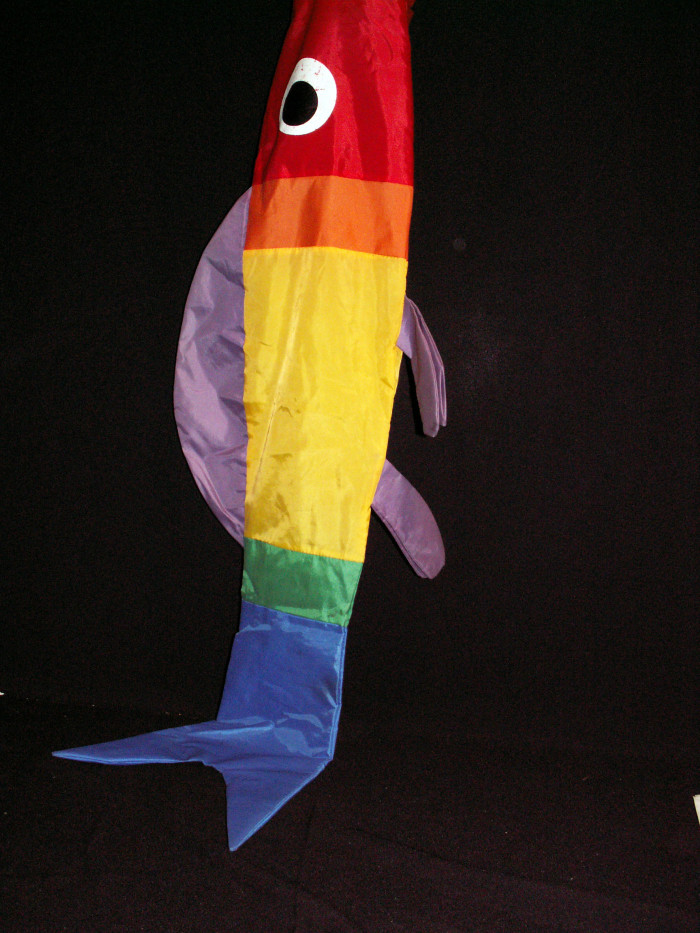Japanese Child Protection Charm: "Koinobori"
Collection: Everyday Connections
This Japanese child protection charm, called "koinobori", is flown outside the home during celebration of Boys' Day.
The Japanese celebrate Boy's Day annually on the day, "tango no sekku", marking the beginning of summer or the rainy season. Before this day, families raise carp-shaped "koinobori" flags, one for each boy (or child)and display a Kintar doll usually riding on a large carp.
In Japanese culture, the carp symbolizes courage and strength because of its ability to swim up a waterfall. Since the carp's courage and strength is a trait desired in boys, families traditionally have flown koinobori from their homes to honor their sons.
Originally, the streamers were used by samurai warriors on the battlefield. The streamers were painted in various colors and shapes. Some of them had carp pictures on them. They became "carp streamers" at the beginning of the modern age.
A koinobori set consists of, from the top of the pole down, a pair of arrow-spoked wheels, called "yaguruma," with a ball-shaped spinning vane, a flying-dragon streamer, called "fukinagashi," that looks like a windsock, a black koinobori and a red koinobori. If more boys are in the household, an additional blue, green and then purple koinobori are added. These carp sets are flown above the roofs of houses with sons, with the biggest (black) koinobori for the father, next biggest (red) for the eldest son, and ranging down to the smallest carp for the youngest son.
Source:
https://artsandculture.google.com/story/the-soul-of-the-japanese-doll-regional-museum-of-history-plovdiv/JgWxfBA6O1M8IQ?hl=en
http://en.wikipedia.org/wiki/Koinobori
http://www.zen-shop.net/koinobori1.html
